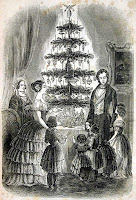Introduced to “The Fifth Season”, Monday, by my old friend, Mose. (A friend with growing intensity now fifty-eight years, it requires another full blog to explore the force-field that is George William Moseley, always Mose to me.) Having googled the phrase, there may be multiple books of the same title, and I have not read the one he showed me. That’s not important. The spark of understanding (like the big bang) ignited with his first sentence and grew from his bare bones description. My understanding may not even be what the author, or Mose, meant to convey. This blog is what I imagined as his words triggered my thoughts.
Triggered my thoughts when faced with the task I had set myself finally to write a brief summing up of my 2022 and my thoughts on the year ahead. That is the fifth season. Like celebrating Winter, Spring, Summer, and Fall, we should celebrate the season of summing up and renewing.
The summing up. The year that passed thirty-four hours ago (at this writing) held a monumental birthday (80th) that I shared with my sister’s 85th. Two months later, the year rolled out one of life’s high points, the publication of Forever Sheriff, third novel in my High Mountain Sheriff Series. A grand party I had worked on for six months, Chair of my 55th Reunion at Harvard Business School soon followed. I should have seen the warning signals, but our annual renewal by the sea for six magnificent weeks, left me with time and solitude to focus on a new book and a short story I had promised Western Fictioneers (“Sweetwater” published in 2022 Christmas anthology). But the remarkable experience of simply living also brought a series of unexpected and perhaps unwanted challenges.
Confidence born of no evidence led to the conviction that I could create High Mountain Sheriff productions and turn the trilogy into a screen series. The publication of “Sweetwater” and the short-story writing experience led to discussion, plans, agreements to create a book of nine short stories, three per sheriff, to cap the High Mountain Sheriff Series.
August 8, a day that will live in publishing infamy, came. Thorndike Press sent a letter to all Five Star (its imprint) authors. Thorndike would suspend Five Star operations on March 31, 2023. No book not published by that date would be published by them. No short stories.
The next day, I offered to buy the discontinued Five Star. For nine days, we worked toward a closing that would allow a continuation for the 50+ authors involved. Abruptly, Gale-Cengage called a Zoom meeting to tell me it would be too much bother, cost more than they would recover, to sell it. They would simply go forward with their plan to dump on the street 50 faithful authors who had given Gale/Cengage/Thorndike/Five Star twenty-two years of life. Their shocking display of corporate character turned their backs on my 10 years of work producing three books in a trilogy I planned to pursue on the screen further to their benefit as well as mine. Nope. Too much bother. Not alone. One of fifty.
For about a year, I had been talking with , maybe even helping, to a an entrepreneur’s a small company in Albuquerque. I had consciously avoided a relationship that included compensation. I know myself. Once I make such an agreement, I give up my ability (right) to set set my own priorities. Writing projects needed my full-time and attention; or, at least, my priority part-time and attention.
I made the commitment to the little company. Since then, I have lived in a spin.
Thus endeth my summing up. Now begins my expectations for the coming year.
My next book, “the football book” waits while I complete a TV Writers’ Workshop. My goal is to develop more insight and understanding of how to market my trilogy. Learning script writing is daunting, but it will work very well if I can sort out my priorities.
The little company in Albuquerque, TPL, has fifteen years history as an R&D lab working for the government. Over the last three years it has developed significant, unique technologies in the world of increased electrification.
Its unique technology enables functions that require electricity to operate failure proof in temperatures above 200 degrees Centigrade (424 degrees Fahrenheit).The practical applications for these high temperature capacitors range from defense (power conversion systems on jet fighters) to further greening of energy in drilling geothermal wells – and a few dozen others.
The task is to cause the development and financing of the small R&D shop into a company that makes and sells the products it has invented in support of the many arenas where business, government, and society are pursuing the increased use of electricity.
To bring my Fifth Season to a close. Summing up 2022: A shaking up. Viewing 2023: A new and big adventure.
Into the Winter Season with gusto. Starting with this author talk on Wednesday the 31st.
Afterword: I finished this, a little late perhaps for its theme, and in preparing for its publication on the website, noticed my August blog and instantly became fearful that I repeated myself, so I held up to review both of them. I concluded “The Fifth Season” is not simply a look back, and the August blog was not a summing up. It’s the look forward that interests me and always has. This year’s look forward will be next year’s summing up and the circle is eternal.


















